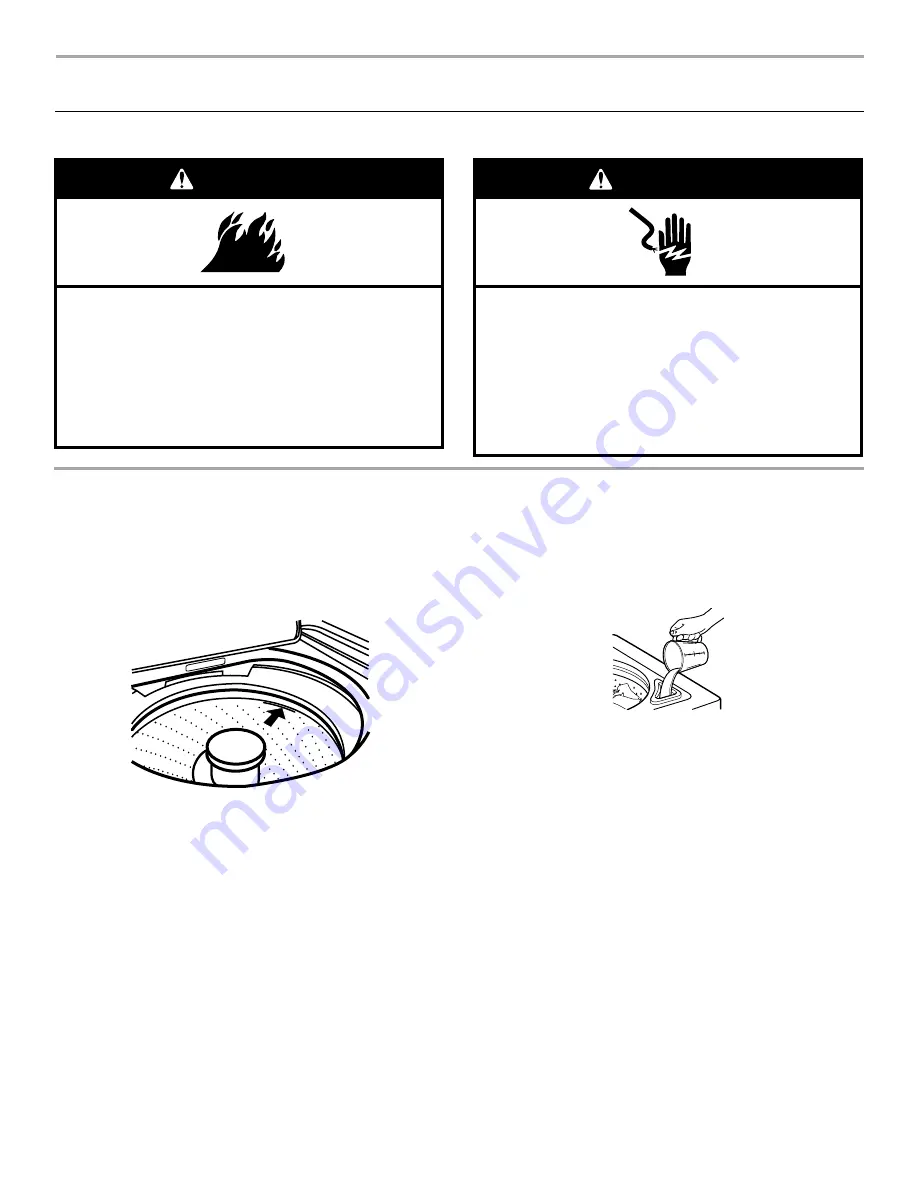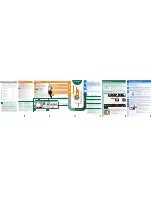
3
WASHER USE
Starting Your Washer
1. Measure detergent and pour it into the washer. If desired, add
powdered or liquid color safe bleach.
2. Drop a sorted load of clothes loosely into your washer.
■
Load evenly to maintain washer balance. Mix large and
small items. Items should move easily through the wash
water.
■
Load only to the top of the basket as shown. Overloading
can cause poor cleaning.
3. (OPTIONAL) Add liquid chlorine bleach.
NOTE: Follow the garment and the chlorine bleach
manufacturers’ directions for proper use. Undiluted bleach
will damage any fabric it touches. The damage appears as
rips, holes, tears, or color loss and may not show up until
several washings later. To avoid spilling, use a cup with a
pouring spout. Do not let bleach splash, drip, or run down
into the washer basket. Always measure liquid chlorine
bleach. Do not guess. Do not use more than the
manufacturer’s recommended amount for a full load. Use less
with a smaller load size.
Style 1: With liquid chlorine bleach dispenser (on some
models)
■
Use only liquid chlorine bleach in this dispenser. Do not
use this dispenser to add powdered chlorine or color-safe
bleach to your load. Pour measured liquid chlorine bleach
into the liquid chlorine bleach dispenser. Bleach is
immediately fed into washer and is diluted automatically
during the wash part of the cycle.
Style 2: Without liquid chlorine bleach dispenser (on some
models)
■
Let the washer fill and begin agitating the load.
■
Add bleach 5 minutes into the wash cycle for best
cleaning and so that bleach can be removed in the rinse
cycle. Pour bleach around the agitator, not directly onto
the load to avoid damaging clothing or other items in the
load.
4. (OPTIONAL) Add liquid fabric softener.
NOTE: Do not spill or drip any fabric softener onto the
clothes. Undiluted fabric softener can stain fabrics. Always
dilute fabric softener with warm water. Using too much fabric
softener can make some items (diapers and towels)
nonabsorbent. If this happens, do not use on every load, or
use less of it in each load.
Fire Hazard
Never place items in the washer that are dampened
with gasoline or other flammable fluids.
No washer can completely remove oil.
Do not dry anything that has ever had any type of oil on
it (including cooking oils).
Doing so can result in death, explosion, or fire.
WARNING
Electrical Shock Hazard
Plug into a grounded 3 prong outlet.
Do not remove ground prong.
Do not use an adapter.
Do not use an extension cord.
Failure to follow these instructions can result in death,
fire, or electrical shock.
WARNING


























